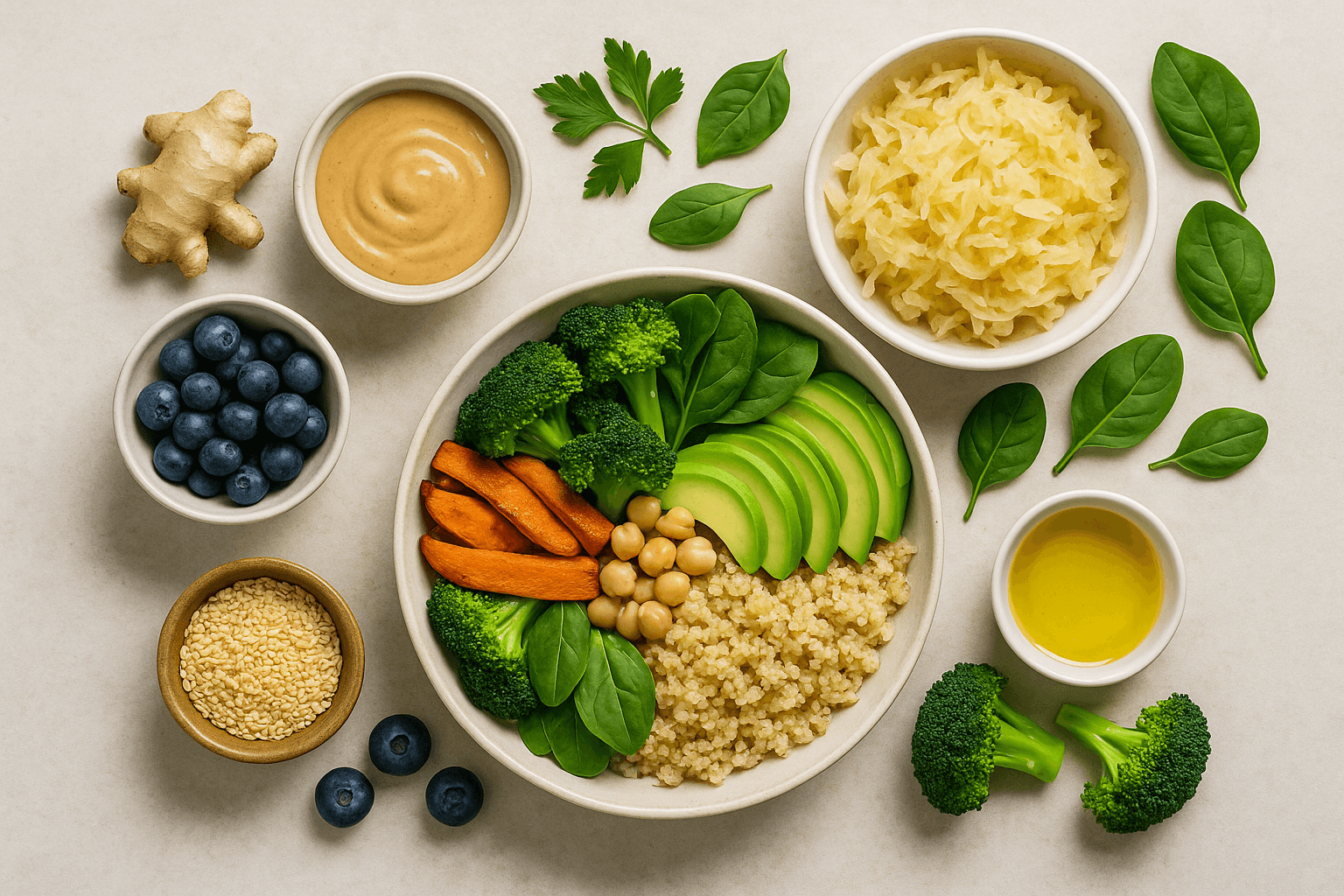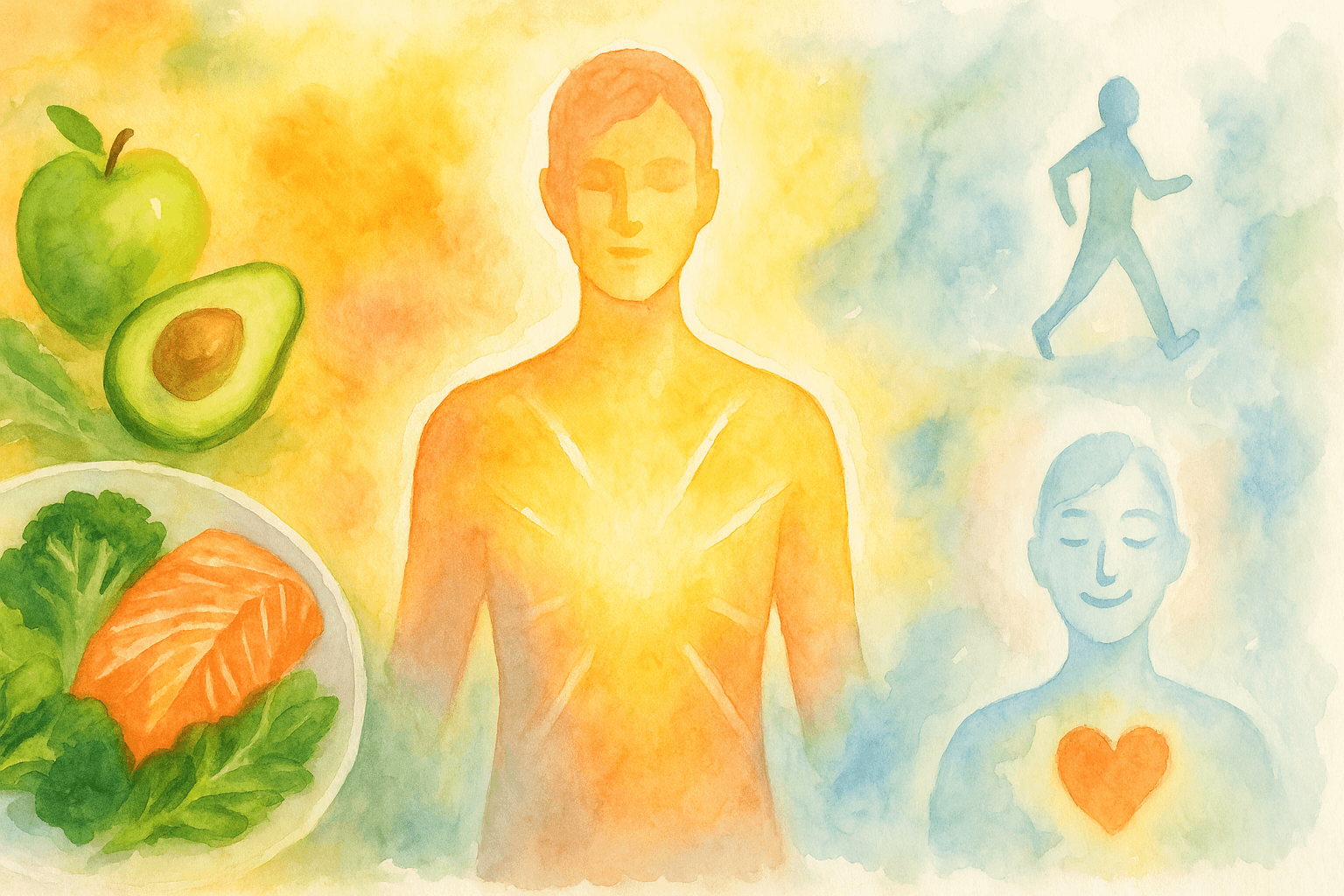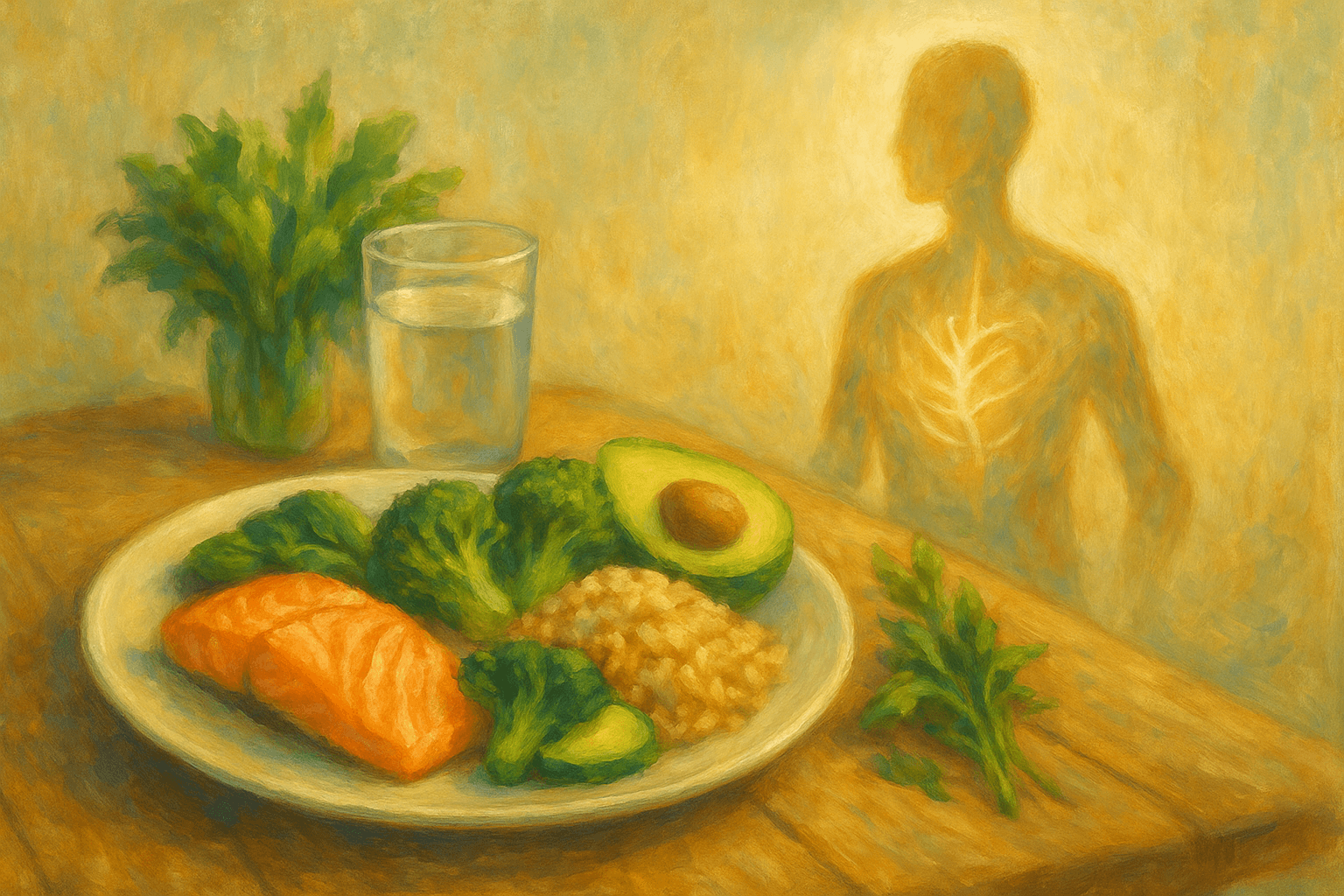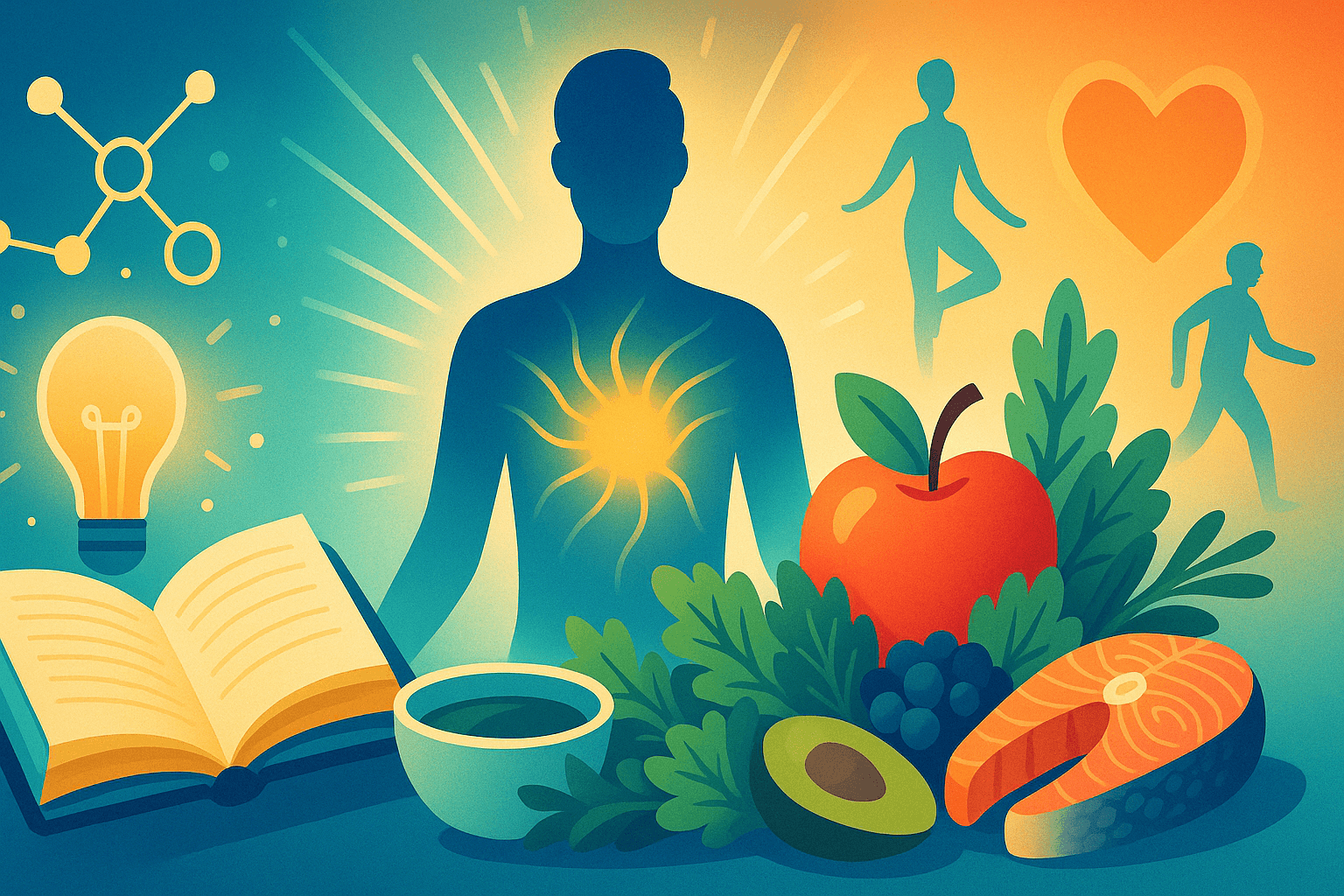Diabetes Uncovered: The Full, Compassionate Guide to Living Well, Eating Smart, and Thriving at Every Stage
Published on July 26, 2025
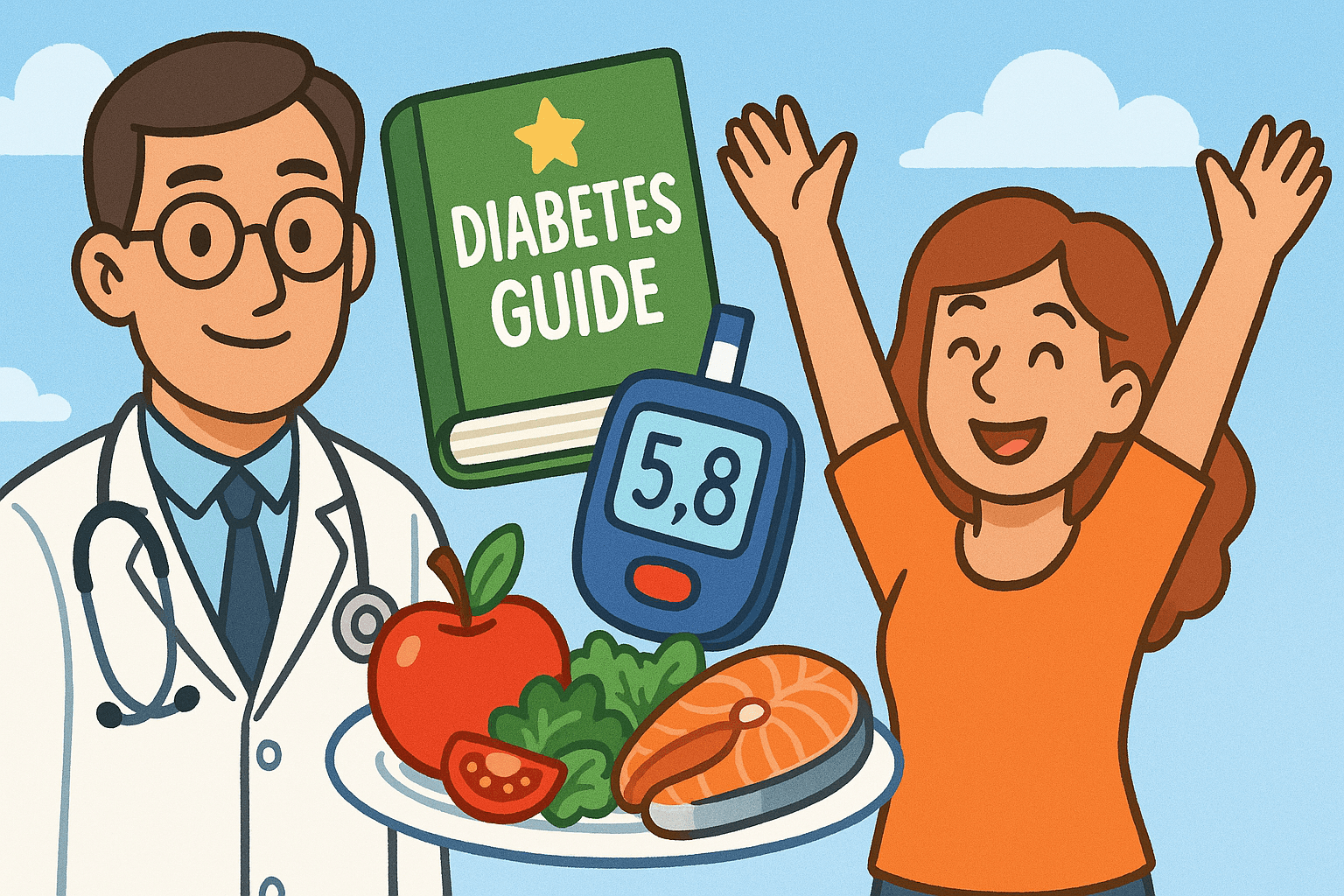
Diabetes — feeling just the word can produce an emotional deluge. For a lot of people, it’s a wave of fear or doubt, a feeling of overwhelm, or even guilt and frustration. For others, diabetes is a daily part of their lives they’ve just learned to live with, riding the highs and lows with determination, creativity, and occasionally, exhaustion. But I’d like to begin with hope: diabetes is not a life sentence. Joy, good food and robust health don’t end here. With the right knowledge, resources, and tools combined with a bit of desire and commitment, anyone with diabetes can thrive with diabetes—creating a quality of life that any person would be happy to have—filled with active, happy, and deeply fulfilling life.
As a dietitian who has had the privilege of walking this path with real people for decades now, I’ve witnessed the power of knowledge and encouragement to turn fear into confidence and confusion into clarity. You don’t have to let diabetes define you, control you or hold you back from the life you love. The journey begins with learning what diabetes really is, busting the most awful myths, and then learning how to master your health, meals and mindset Step-by-step and always at your own pace.
What Is Diabetes, Really?
Diabetes is not just one disease — it’s a cluster of diseases, all of which relate to how your body produces and uses insulin, and how well it controls blood sugar. Here’s how it works: After you eat, carbohydrates in your food are broken down into glucose, or sugar, which then enters your bloodstream. To get that glucose into your cells (where it’s used for energy), your pancreas makes insulin, a hormone that is like a “key.” But with diabetes, this process isn't happening the way it should: either your body doesn't produce enough insulin or your cells become resistant to it. The result? Glucose lingers in your blood, leading to above-normal blood sugar levels.
Type 1: This type emerges most frequently in children or young adults, though it can develop at any age. It is an autoimmune disease — the body attacks and destroys the insulin-producing cells in the pancreas by mistake. Those with Type 1 need daily insulin to live, but with the right tools and knowledge can live long healthy lives.
Type 2: Much more common, Type 2 occurs more gradually and can affect adults, although it also is increasing among younger people, including children and teens. The body either resists insulin or can’t make enough of its own. The risk can depend on factors such as genetics, age, weight, inactivity, and even stress. Some control it with lifestyle factors alone; for others, medication or insulin is necessary.
Gestational Diabetes: This condition also arises during pregnancy, when hormones have an impact on how well insulin works. It normally disappears after birth, but raises the risk for Type 2 diabetes down the road, for both mother and child.
There are more rare forms caused by genetic conditions, certain medications or diseases of the pancreas, but most people have either Type 1 or Type 2.
Why Does Diabetes Matter?
High blood sugar, over the long term, quietly harms the body. Blood vessels, nerves, eyes, kidneys and the heart can all be affected — often without apparent symptoms until serious damage has occurred. That is why early diagnosis and continued care are crucial. But here’s the hopeful part: thanks to modern science, we have the ability to delay, minimize or even eliminate most complications. Steady self-care, regular checkups, easy-to-sustain lifestyle tweaks all add up -- and can make a big difference in helping you stave off disease and live your life, for years to come.
Busting the Top Diabetes Myths
Myth 1: Eating too much sugar causes diabetes.
It’s a common misapprehension, yet diabetes is far more complicated. A high-sugar diet is not a good idea, but the evidence does not support the myth that sugar is the source of all evil, or that it will be so bad for you that no matter your habits in other respects, you will surely die early. Anyone, of any size or with any history or pattern of eating, can develop diabetes.
Myth 2: Once you have diabetes, you have to deprive yourself of your favorite foods forever.
Absolutely not! With careful planning and approach, and some new strategies, people with diabetes can enjoy a variety of foods — including their favorites. The key is knowing how much to eat (most of us eat more than we can handle, which can lead to blood sugar spikes — and cravings — down the line) and when, and pairing certain foods together to minimize their impact on the blood sugar.
Myth 3: Diabetes only happens to overweight people.
Anybody — no matter how big or small — can get Type 1 diabetes. Many people with Type 2 diabetes are at a healthy weight, and even though carrying extra weight may pose more risk of having complications from diabetes, it is not the whole truth. Beating yourself up or blaming others doesn’t help; concentrating on small changes does.
Myth 4: Having diabetes is a state of constantly feeling sick or tired.
When managed well, most people with diabetes feel energetic, motivated and can live wide-reaching adventures and great accomplishments. Diabetes is hard, but it doesn’t have to be well nigh impossible.
Health Understanding Blood Sugar: Your New Superpower
Managing diabetes is about keeping your blood sugar within a healthy range — not just to “meet the right numbers,” but also to protect your organs, conserve your energy and feel your best. Every decision you make every day affects your blood sugar in a distinctive, specific way:
Food: Carbohydrates have the most impact on blood sugar, but not all carbs are created equal. Sugary drinks, white bread and pastries can all cause a sharp spike in blood sugar. Whole grains, beans, lentils and most vegetables digest slowly and produce milder elevations. Balancing carbs with protein, healthy fats and fiber can help you take the sharp edges off those blood sugar “roller coasters.”
Movement: Exercise can cause your body to be more sensitive to insulin and reduce blood sugar, sometimes dramatically and quickly. You don’t have to become an athlete — even short walks after meals can be useful.
Stress and Sleep: Stress hormones (i.e. cortisol), and not getting enough sleep, can raise blood sugar, even if you’ve eaten just what you should. Stress management and a focus on restful sleep are critical tools for balance.
Medication: Oral drugs or insulin are required by many to manage blood sugar. This isn’t a defeat — it’s a potent weapon in your self-care arsenal.
Eating Well With Diabetes
Give up the idea that there is one “diabetes diet.” The best diet to follow is the one you can stick with, that satisfies you, and keeps blood sugar on an even keel. Pay attention to real, whole foods — lots of vegetables, whole grains, beans, lean proteins (fish, chicken, tofu, egg), and healthy fats (avocado, olive oil, nuts, seeds).
Carbohydrate knowledge: Get to know how different foods influence your blood sugar by doing before-and-after meal testing. Distribute carbs throughout the day to prevent big spikes. Eyeball portions based on food labels.
Fiber is your friend: High-fiber foods slow the rate of digestion, keep you full and also help maintain blood sugar. Your meals should star vegetables, fruits, beans, whole grains and seeds.
Portion control: Healthy foods too can raise blood sugar if portions are large. Using visual cues can also help: palm for protein, fist for grains or starchy vegetables, thumb for fats.
Don’t skip meals: Eating regularly helps prevent swings in blood sugar and overeating later. Skipping meals can also be a recipe for needing to overeat later — fatigue and cravings are the enemies of self-restraint.
Building a Balanced Plate
For each meal, give the “plate method” a go:
Half your plate: non-starchy vegetables (greenery, broccoli, peppers, tomatoes, cauliflower).
One quarter: lean protein (chicken, fish, tofu, eggs, beans).
One quarter: whole grains or starchy vegetables (brown rice, sweet potatoes, quinoa, corn).
Add some healthy fats, maybe a piece of fruit if you want.
It is a simple, visual approach to keeping your delicious meals colorful and balanced.
The Power of Movement
Every bit of activity helps. Strive for a minimum of 150 minutes a week of moderate exercise (heart-pumping but not so vigorous that you’re gasping for breath; think brisk walking, swimming, biking, dancing). Throw in some sessions of strength training — muscle burns more sugar than fat, which can help keep blood sugar in check naturally. If you’re just building a movement habit, it’s okay to start slow — even five minutes a few times a day. Acknowledge each step and take notice of how you feel.
Stress, Sleep, and Mental Health
You can eat beautifully and still have problems regulating blood sugar if stress and sleep are off course.
Stress: Chronic stress can cause your body to become more resistant to insulin. Consider doing breathing exercises, yoga, meditation or hobbies that calm you.
Sleep: Try to get 7–9 hours of good quality sleep per night. Keep a sleep schedule, avoid screens at bed time and make your room as restful as you can.
Support: Whether it’s friends, a group or a counselor, we need to understand emotional health is as important as physical health in managing diabetes.
The Role of Medications: Friends Not Foes
If your healthcare team has recommended drugs or insulin, this is because your body requires assistance. Taking meds isn’t a failure—it’s a form of protection for your body, and a way of ensuring that you can feel as good as possible. Don’t skip or change doses without discussing your care with your provider. Report side effects; there are generally good substitutes.
Complications Can Be Avoided: A Little Goes a Long Way
Regular care is very impactful. Keep checking your blood sugar, visiting your eye doctor and foot specialist, and monitoring blood pressure and cholesterol. Small course corrections and early detection can sometimes prevent bigger problems down the road. Celebrate each of those healthy meals, each walk, each “in-range” number—the future investment you’re making day in and day out.
Living Well, Every Day
Plan ahead: Fill the kitchen with nourishing snacks and meal choices. Preparing food ahead of time makes good choices easy, even when you’re busy or tired.
Form your team: Turn to care providers, enabling friends, family — or a diabetes community — to support, troubleshoot and motivate you.
Stay loose: Life happens—there will be bad days. The important thing is to get back in the groove, not let one slip send you into an out-of-control spin.
Celebrate your wins: Each small decision — that water instead of soda, that walk around the block, that prep of healthy lunch — is a win.
Final Thoughts: Diabetes and You
Your diagnosis is not your fate. Having diabetes is difficult, but it’s also a gift — the gift of information and growth, of building resilience and living more mindfully and purposefully. With your tools, help, and sense of self-compassion, you can create a life that’s not “just okay” but really rewarding. Every meal, every step, every little bit of self-care is a fresh opportunity to head in the direction of your healthiest, happiest self — diabetes and all. You are stronger than you even know, and your story is a two trains roaring together and there is nothing you can do but hold on to your hat.




